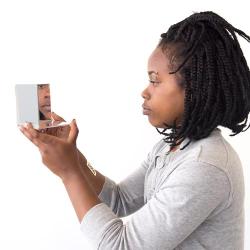Source Institutions
Source Institutions
Add to list Go to activity
Activity link broken? See if it's at the internet archive

In this optics/mathematics activity, learners use two hinged mirrors to create a kaleidoscope that shows multiple images of an object. Learners discover that the number of images reflected in the mirrors depends on the angle between the mirrors. Learners also observe that when they set the hinged mirrors on top of a third mirror, they create a reflector that always sends light back in the direction from which it came. Use this activity to introduce basic principles of light and optics including angle of reflection and angle of incidence.
- 10 to 30 minutes
- 10 to 30 minutes
- $5 - $10 per student
- Ages 6 - 14
- Activity
- English
Quick Guide
Materials List (per student)
- Three 6 x 6 inch (15 x 15 cm) mirrors
- Duct tape
- A piece of light cardboard (such as a manila file folder)
- Adult help
Subjects
-
Life Sciences
-
Human Senses and Perception
- Vision
-
Human Senses and Perception
-
Mathematics
-
Geometry
- Plane Geometry
-
Geometry
-
Physical Sciences
-
Vibration and Waves
- Light and Optics
-
Light and Optics
- Lenses and Mirrors
- Reflection and Refraction
-
Vibration and Waves
-
The Nature of Science
-
The Scientific Process
- Conducting Investigations
-
The Scientific Process
Audience
To use this activity, learners need to:
- see
- touch
Learning styles supported:
- Involves hands-on or lab activities
Other
This resource is part of:
Access Rights:
- Free access
By:
Rights:
- All rights reserved, The Exploratorium,
Funding Sources:
- National Science Foundation
- California Department of Education
- NEC Foundation of America
